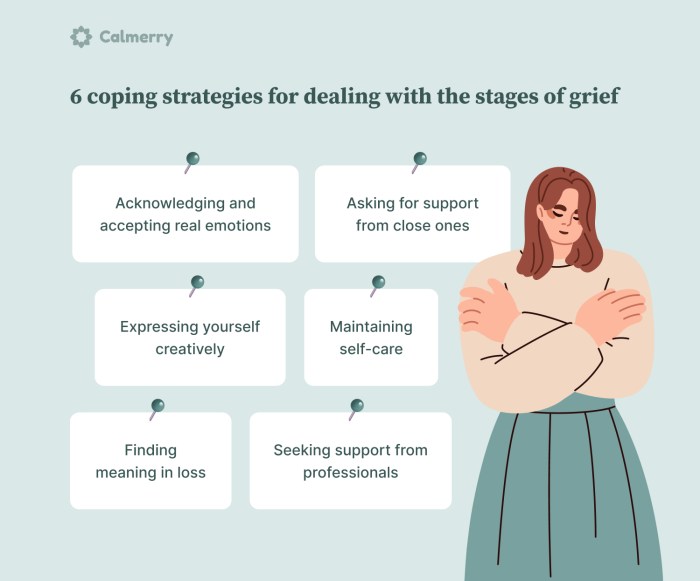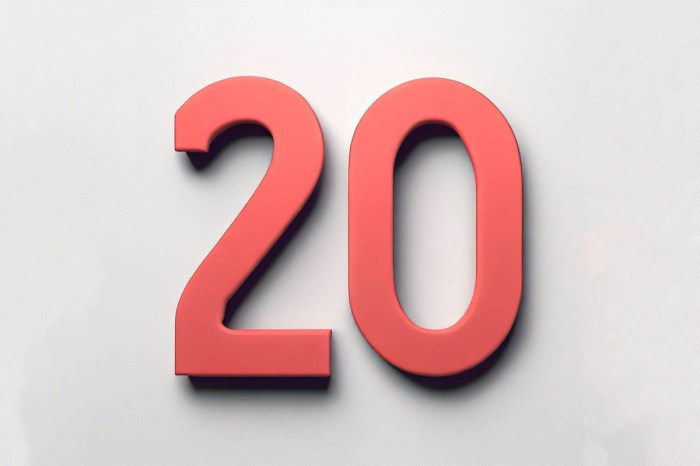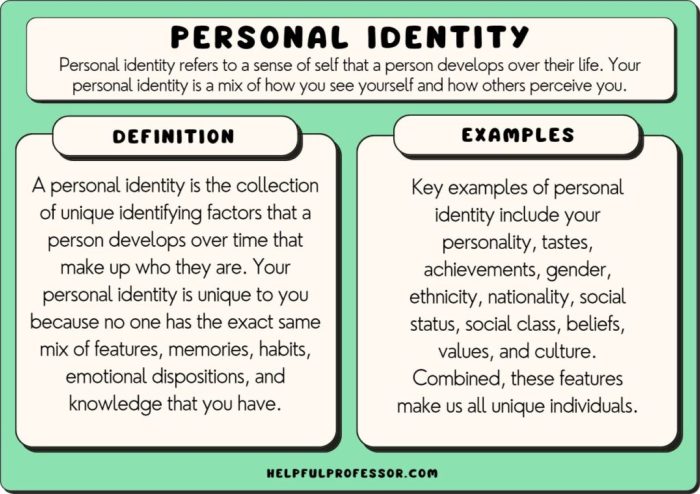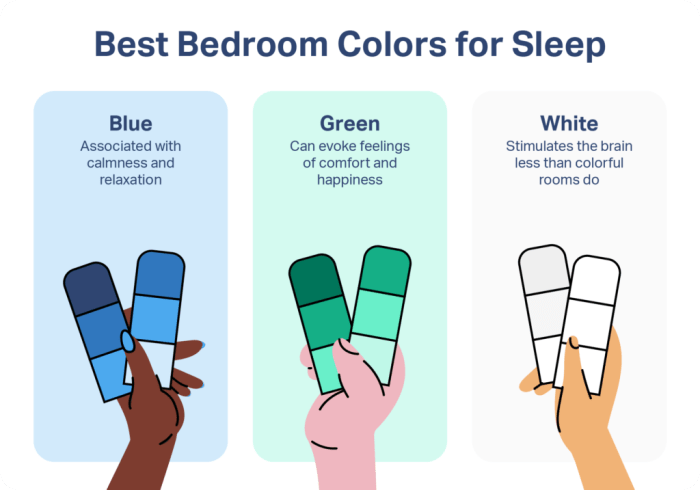How to find your dream job is a journey of self-discovery and strategic planning. It’s not just about applying for jobs; it’s about understanding yourself, your skills, and the world of work. This guide will take you through the process, from identifying your values to crafting a compelling resume, and finally, to handling rejection with grace.
This comprehensive guide breaks down the path to your dream job into seven key stages. We’ll explore understanding your values and interests, assessing your skills, researching potential careers, building your professional network, creating a winning resume and cover letter, preparing for interviews, and ultimately, handling rejection with resilience.
Understanding Your Values and Interests
Knowing your core values and interests is crucial for identifying a fulfilling career path. It’s about aligning your personal compass with the professional landscape. Understanding these internal drivers allows you to explore careers that resonate with your authentic self, fostering greater job satisfaction and long-term success. This self-awareness forms the bedrock of career exploration, helping you choose paths that offer not just a paycheck but a sense of purpose and meaning.Identifying your values and interests is an ongoing process of self-discovery.
It’s not a one-time event but rather a journey of reflection and exploration. This ongoing introspection allows for adjustments as you gain experience and your priorities evolve. This journey, while sometimes challenging, leads to a more profound understanding of your professional aspirations.
Identifying Core Values
Understanding your core values provides a framework for career choices. Values are deeply held beliefs that guide your decisions and actions. They shape your preferences for work environments, types of tasks, and levels of responsibility. By understanding these values, you can find careers that align with your fundamental beliefs.
- Honesty and integrity are essential values for many professionals. Careers like law, accounting, and journalism often prioritize these traits. Those valuing these traits are drawn to roles where ethical considerations are paramount.
- Creativity is a valuable asset in fields like graphic design, writing, and architecture. Individuals valuing creativity find fulfillment in roles that encourage innovation and problem-solving through unique perspectives.
- Collaboration and teamwork are crucial for success in many professions. Careers in teaching, social work, and project management benefit from a strong ability to collaborate effectively with others.
- Stability and security are important values for some. Careers in finance, healthcare, and public service often offer a degree of stability and predictability.
- Autonomy and independence are valued by those seeking control over their work and schedule. Freelance writers, consultants, and entrepreneurs often prioritize these values.
Exploring Career Paths Aligned with Values
The career paths that resonate with your values often involve working in an environment that mirrors your core beliefs. For instance, someone valuing creativity might thrive in advertising, graphic design, or even software development, where innovative problem-solving is key. Conversely, those prioritizing collaboration may find their niche in team-based roles like project management or consulting.
Comparing and Contrasting Career Fields
A comparison of career fields helps highlight the differences in skills and work environments.
| Career Field | Required Skills | Work Environment |
|---|---|---|
| Software Engineering | Problem-solving, technical skills, attention to detail | Collaborative, fast-paced, demanding |
| Education | Communication, patience, empathy, organization | Classroom-based, collaborative, structured |
| Healthcare | Compassion, empathy, problem-solving, technical skills | Patient-centric, often demanding, structured |
| Marketing | Creativity, communication, strategic thinking, data analysis | Dynamic, fast-paced, collaborative |
Utilizing Self-Assessment Tools
Numerous self-assessment tools and resources can aid in career exploration. These resources provide structured questionnaires and feedback, helping you identify your strengths, weaknesses, and interests. Online career assessments, personality tests, and career aptitude tests are valuable resources. They provide valuable insights into potential career paths.
Connecting Personal Interests to Potential Careers
Beyond hobbies, consider how your personal interests connect to potential careers. For example, a passion for wildlife conservation might lead to a career in environmental science or wildlife management. Exploring how your hobbies translate into professional opportunities can uncover hidden career paths.
Skill Assessment and Development: How To Find Your Dream Job
Identifying and honing your skills is crucial in landing your dream job. A thorough understanding of your current skill set, coupled with a strategic plan for development, significantly enhances your marketability and increases your chances of securing a role that aligns with your aspirations. This section focuses on assessing your current skills, identifying areas for improvement, and developing a personalized plan to acquire the necessary expertise.A comprehensive skill assessment is not just about listing what you can do; it’s about quantifying your abilities and recognizing areas where further development is needed.
This process will allow you to pinpoint specific skills required for various job sectors and create a roadmap for improvement. This proactive approach is essential for career advancement and positioning you as a strong candidate in today’s competitive job market.
Identifying Key Skills in Different Job Sectors
Understanding the specific skills demanded in different industries is vital for targeted skill development. Different roles require unique competencies. For example, a software engineer needs proficiency in coding languages like Python or Java, while a marketing professional requires strong communication and analytical skills. Researching job descriptions for roles that interest you will reveal the necessary technical and soft skills.
Websites like LinkedIn, Indeed, and Glassdoor provide valuable insights into the skills employers seek.
Assessing Your Current Skill Levels
A structured approach to assessing your current skill level is essential for effective skill development. This involves self-assessment, using online tools, and seeking feedback from mentors or colleagues. Consider creating a skills inventory outlining your strengths and weaknesses in various areas. For instance, if you’re aiming for a data analyst role, you might list your proficiency in statistical software like SPSS or R, along with your ability to interpret data visualizations.
This inventory will serve as a baseline for your development plan.
Developing a Skill Development Plan
Once you’ve identified your current skill levels and the skills required for your target roles, create a structured plan for improvement. This plan should include a timeline, specific learning objectives, and the resources needed to achieve them. Consider utilizing online courses (Coursera, edX, Udemy), workshops (local community centers, professional organizations), and mentorship programs to gain practical experience and knowledge.
For example, if you need to enhance your data analysis skills, you could enroll in an online course focused on data visualization using Tableau.
Utilizing Online Resources for Skill Assessment and Development
Numerous online resources provide valuable tools for skill assessment and development. Platforms like LinkedIn Learning, Skillshare, and Coursera offer a wide range of courses catering to various skill sets. These platforms often include assessments to gauge your current skill level and recommend courses tailored to your needs. You can also use job boards and company websites to identify the specific software or tools used in a particular industry.
This targeted approach to skill development significantly increases your efficiency.
Organizing Potential Employers by Skill Sets
Creating a list of potential employers categorized by skill sets is beneficial for targeted job applications. For example, if you have strong coding skills, you could compile a list of tech companies. Similarly, if you possess excellent communication and interpersonal skills, you might compile a list of companies in the customer service or sales sector. This organized approach helps you tailor your resume and cover letter to the specific requirements of each company, increasing your chances of landing an interview.
Researching Potential Career Paths
Now that you’ve explored your values, interests, and skills, it’s time to delve into the exciting world of potential career paths. Understanding the landscape of available roles is crucial for making informed decisions about your future. This involves researching various professions, evaluating their requirements, and assessing their long-term viability. Thorough research is the key to finding a job that not only aligns with your personal aspirations but also provides a fulfilling and sustainable career.
Career Research Resources
Effective career research relies on a variety of sources. These resources offer insights into diverse industries and specific job roles, empowering you to make informed decisions about your future.
- Job Boards: Sites like LinkedIn, Indeed, Monster, and Glassdoor provide extensive listings of open positions. These platforms allow you to filter by industry, location, and specific s, streamlining your search and enabling you to identify potential opportunities that match your skills and aspirations.
- Industry Publications: Publications such as trade journals, industry news websites, and company blogs offer in-depth articles about various sectors. These resources offer valuable insights into industry trends, emerging technologies, and potential career paths within specific fields. Reading these publications can give you a more detailed understanding of the specific requirements and challenges within a particular profession.
- Professional Organizations: Organizations like the American Medical Association (AMA) or the Association for Talent Development (ATD) offer valuable information about their respective industries, including career paths, job descriptions, and educational resources. These organizations often host events and workshops, providing networking opportunities and valuable insights into the field.
Analyzing Job Descriptions
Understanding the specific requirements of a job role is vital. Carefully reviewing job descriptions helps you identify the necessary skills, qualifications, and experience. This process allows you to determine if your current skillset aligns with the demands of the role and identify any areas needing further development.
Pay close attention to the s and phrases used in the job description. These often highlight the crucial skills and qualifications sought by employers. Consider the level of experience required. If a role demands extensive experience, it may be necessary to acquire relevant experience or explore entry-level positions to gain experience and build a foundation for advancement.
Salary Expectations
Understanding salary expectations is essential for financial planning and career negotiation. Researching salary ranges for different roles can help you determine if a potential career aligns with your financial goals.
- Salary Research Tools: Sites like Salary.com, Payscale, and Glassdoor provide salary data for various professions and experience levels. These tools often allow you to filter results by location, job title, and experience, offering a comprehensive view of salary expectations.
- Consider Location: Salary expectations often vary based on geographical location. Cost of living and regional economic factors can influence salary levels. Understanding these factors can provide a more nuanced perspective on your earning potential.
Long-Term Career Prospects
Evaluating long-term career prospects involves assessing factors such as job growth, industry trends, and potential for advancement. Understanding these elements can inform your decision about which career path aligns best with your future goals.
- Job Growth Potential: Research the projected growth of various professions using resources like the U.S. Bureau of Labor Statistics (BLS). The BLS provides data on employment projections for different industries and occupations. This information helps you assess the potential for career growth and opportunities in a specific field.
- Industry Trends: Keep abreast of industry trends and advancements. Staying updated on the latest technological developments and industry shifts is crucial to adapting to changing demands and maintaining competitiveness. This understanding allows you to anticipate future needs and tailor your skills accordingly.
- Career Advancement Paths: Analyze potential career advancement paths within the profession. Identify possible career progression from entry-level to senior-level positions and determine if the opportunities align with your career aspirations.
Growth Potential and Job Security
Comparing different career paths involves evaluating their potential for growth and stability. This analysis considers factors like industry demand, technological advancements, and economic conditions.
| Career Path | Growth Potential | Job Security |
|---|---|---|
| Software Engineer | High | High |
| Healthcare Professional | Moderate | High |
| Retail Sales Associate | Low | Low |
This table provides a basic comparison. Further research is needed to gain a more detailed understanding of specific roles and industries.
Networking and Building Connections
Networking is a crucial component of career advancement. It’s not just about collecting business cards; it’s about building genuine relationships that can open doors to opportunities, mentorship, and valuable insights. Effective networking fosters collaboration, expands your professional horizons, and positions you as a knowledgeable and reliable individual within your field. This process is about actively engaging with people who can help you reach your career goals.Networking isn’t a one-time event; it’s an ongoing process of building and nurturing relationships.
Consistent effort in connecting with others and staying informed about industry trends are key to success in the long run.
Finding your dream job isn’t just about resume polishing; it’s about honing your leadership skills. A strong leader commands respect and often opens doors to opportunities. However, if you fall prey to the common mistakes highlighted in articles like warning these 9 mistakes will destroy your leadership effectiveness , your progress could stall. So, remember to focus on continuous self-improvement and building a strong foundation for your future career path.
Understanding these crucial aspects will ultimately help you find that dream job.
Importance of Industry Events
Industry events offer unparalleled opportunities to connect with professionals in your field. These events provide a structured environment where you can engage in meaningful conversations, learn about current trends, and establish valuable connections. Attending conferences, workshops, and seminars can expose you to potential employers, mentors, and collaborators. The key is to actively participate, not just observe.
Strategies for Effective Networking
Networking strategies involve various approaches. Preparation is key to successful interactions. Researching attendees in advance, understanding their work, and having thoughtful questions prepared will significantly enhance your interactions. A genuine interest in learning about others and their experiences is essential. Remember, networking is a two-way street.
- Active Listening: Pay close attention to what others say. Ask clarifying questions and show genuine interest in their perspectives. This demonstrates respect and fosters deeper connections.
- Targeted Conversation Starters: Prepare a few concise and relevant questions to initiate conversations. Questions related to their work or recent projects are often more engaging than generic inquiries.
- Follow-up: After an interaction, send a brief thank-you note or connect on LinkedIn to reinforce the connection and express your appreciation for the conversation.
Leveraging Online Platforms
Online platforms like LinkedIn are powerful tools for expanding your professional network. These platforms allow you to connect with people globally, explore industry trends, and discover potential opportunities. Regularly updating your profile, engaging in relevant discussions, and participating in online groups can help you build a strong online presence.
- LinkedIn Profile Optimization: Ensure your LinkedIn profile is comprehensive and reflects your skills and experience accurately. Use s relevant to your industry to enhance searchability. Showcase your achievements and contributions to your previous roles.
- Networking Groups: Join industry-specific groups on LinkedIn and other platforms to engage in discussions and connect with peers. Sharing insights and participating in discussions demonstrate your expertise and knowledge.
- Direct Messaging: Use LinkedIn’s messaging feature to reach out to individuals you admire or who could potentially offer mentorship. Be clear about your purpose for reaching out, and be prepared to offer value in return.
Building Relationships with Mentors and Advisors
Mentors and advisors can significantly impact your career trajectory. They offer guidance, support, and insights based on their experiences. Seeking out mentors who align with your career aspirations and proactively engaging in discussions with them is crucial. A mentor-mentee relationship thrives on mutual respect, shared goals, and open communication.
- Identifying Potential Mentors: Research individuals in your field who have achieved success. Look for professionals whose expertise aligns with your career goals. Consider reaching out to those who have worked in similar industries.
- Initiating Contact: Reach out to potential mentors through email or LinkedIn. Clearly articulate your career aspirations and what you hope to gain from the relationship. Be prepared to discuss your career goals and potential areas for improvement.
- Cultivating the Relationship: Regular communication, whether through meetings or online exchanges, is key to fostering a strong mentor-mentee relationship. Be proactive in seeking feedback and demonstrating a willingness to learn and grow.
Framework for Building a Professional Network
Building a professional network requires a structured approach. Consistent effort, thoughtful engagement, and proactive nurturing of relationships are key to success. This approach ensures that connections are sustained and meaningful.
- Goal Setting: Define specific goals for your network. Identify individuals whose expertise or experiences can help you advance your career.
- Relationship Management: Maintain regular contact with your network through email, phone calls, or social media. Offer assistance and support when appropriate.
- Mutual Benefit: Focus on providing value to your network. Share insights, offer assistance, and participate in discussions that demonstrate your knowledge and expertise.
Crafting a Compelling Resume and Cover Letter
Your resume and cover letter are your first impression on a potential employer. They are crucial tools for showcasing your skills and experience, highlighting why you’re the ideal candidate for a specific role. A well-crafted resume and cover letter can significantly increase your chances of landing an interview.A strong resume and cover letter go beyond simply listing your accomplishments; they tell a story about your career journey and how your skills align with the needs of the employer.
This section will delve into the structure, content, and tailoring strategies to make your application materials truly compelling.
Resume Structure and Content, How to find your dream job
A well-structured resume is easily scannable and highlights key information. A typical resume structure includes contact information, a summary or objective statement, skills, experience, education, and awards/certifications. The summary/objective statement concisely describes your professional goals and relevant skills. The experience section should use the action-verb method, detailing your responsibilities and achievements. Quantifiable results demonstrate the impact of your contributions.
Education and skills sections should be presented in a clear and organized manner.
- Contact Information: Include your name, phone number, email address, and professional online portfolio (e.g., LinkedIn profile) for easy accessibility.
- Summary/Objective Statement: This concise statement highlights your key skills and career aspirations, tailored to the specific job description.
- Skills: List relevant technical, soft, and transferable skills that align with the job requirements. Use s from the job description to increase visibility.
- Experience: Use the action-verb method to describe your responsibilities and achievements. Quantify your accomplishments whenever possible (e.g., “Increased sales by 15%”).
- Education: List your degrees, certifications, and relevant coursework in reverse chronological order.
- Awards/Certifications: Include any relevant awards, certifications, or professional recognitions.
Cover Letter Structure and Content
Your cover letter is a personalized introduction that demonstrates your understanding of the specific job and company. It should highlight your qualifications and enthusiasm for the position. A standard cover letter structure includes a greeting, introduction, body paragraphs, and closing. Each paragraph should address a specific aspect of the job description.
- Greeting: Address the letter to a specific person, if possible. If not, use a formal salutation (e.g., “Dear Hiring Manager”).
- Introduction: Briefly introduce yourself and state why you’re interested in the specific job and company.
- Body Paragraphs: Each paragraph should focus on a specific requirement or skill mentioned in the job description. Use examples to illustrate your experience and achievements.
- Closing: Reiterate your interest in the position and express your enthusiasm for the opportunity. Include your contact information and a closing salutation (e.g., “Sincerely”).
Tailoring Your Resume and Cover Letter
Tailoring your resume and cover letter to each job application is critical. Carefully review the job description and identify s, skills, and experiences that directly align with the requirements. Adjust your resume and cover letter content to reflect these specific needs.
- Optimization: Incorporate s from the job description into your resume and cover letter to improve searchability.
- Content Adjustments: Modify your resume and cover letter to highlight the skills and experiences most relevant to the specific role.
- Example: If applying for a marketing position, highlight marketing-related skills and projects in both your resume and cover letter.
Example Formats
A chronological resume format lists your work experience in reverse chronological order, while a functional resume format emphasizes skills and abilities. Choose the format that best highlights your qualifications. For cover letters, use a traditional block format or a more creative format that aligns with your personal brand and the company culture.
- Chronological Resume Format: Best for highlighting a consistent career progression.
- Functional Resume Format: Best for individuals with gaps in employment or who want to emphasize transferable skills.
Common Resume Mistakes and How to Avoid Them
| Mistake | How to Avoid |
|---|---|
| Generic content | Tailor your resume and cover letter to each job application. |
| Poor grammar and typos | Proofread carefully for errors before submitting. |
| Lack of quantifiable results | Quantify your accomplishments whenever possible. |
| Excessively long resume | Keep your resume concise and focused on relevant information. |
| Inadequate use of s | Incorporate s from the job description. |
Preparing for Interviews and Job Applications

Landing your dream job often hinges on how well you perform in the interview process. Thorough preparation is key to showcasing your skills and personality in a positive light. This section will equip you with strategies to ace your interviews and increase your chances of securing the position you desire.Effective interview preparation goes beyond simply memorizing answers. It involves understanding the employer’s needs, highlighting your relevant experiences, and presenting yourself as a confident and enthusiastic candidate.
This comprehensive guide covers essential aspects, from common interview questions to strategies for behavioral interviews and tips for professional presentation.
Common Interview Questions and Effective Answers
Knowing how to respond to common interview questions is crucial. These questions are designed to assess your suitability for the role and your ability to handle various work situations. Practicing your responses in advance can significantly boost your confidence and ensure a smooth interview.
- Tell me about yourself.
- Why are you interested in this role?
- What are your strengths and weaknesses?
- Why are you leaving your current job (if applicable)?
- Where do you see yourself in five years?
- Why should we hire you?
Preparing for Behavioral Interview Questions
Behavioral interview questions probe into your past experiences to predict your future performance. These questions often begin with phrases like “Tell me about a time when…” or “Describe a situation where…” To answer effectively, use the STAR method (Situation, Task, Action, Result).
Finding your dream job often feels like a quest, but it’s more about aligning your skills with your passions. One crucial step is understanding yourself better. For instance, checking out 8 eye opening tips shake off your stubborn belly fat might seem unrelated, but the principles of self-discovery apply equally to career goals. Ultimately, it’s about recognizing your strengths and tailoring your approach to match the perfect opportunity.
- STAR Method: Detail the situation, the task you faced, the action you took, and the result of your actions. This structured approach helps you articulate your experiences concisely and effectively, highlighting key skills and accomplishments.
Interview Preparation Checklist
A well-organized checklist can ensure you don’t overlook crucial preparation steps.
- Research the company and the role thoroughly.
- Review your resume and cover letter, ensuring they align with the job description.
- Prepare answers to common interview questions, focusing on the STAR method for behavioral questions.
- Practice your answers out loud to build confidence and refine your delivery.
- Prepare questions to ask the interviewer to demonstrate your interest and engagement.
- Plan your outfit and transportation to arrive on time and presentable.
- Confirm the interview time and location to avoid any last-minute surprises.
- Prepare some positive anecdotes to showcase your personality and values.
Presenting Yourself Confidently and Professionally
First impressions matter. Projecting confidence and professionalism from the moment you meet the interviewer can make a significant difference.
Finding your dream job is a journey, not a destination. It’s about aligning your skills and passions with opportunities, and understanding your body’s needs can be a crucial part of this journey. For example, understanding the glycemic load, glycemic index, and insulin index can help you make better food choices, leading to improved energy levels and focus – vital for tackling job searches and interviews.
Learning more about this topic can be incredibly helpful: glycemic load glycemic index and insulin index explained. Ultimately, a well-nourished body can fuel your quest for the perfect career path.
- Professional Attire: Dress appropriately for the company culture and role. Researching the company beforehand will help you make a well-informed choice.
- Positive Body Language: Maintain good posture, make eye contact, and smile to convey confidence and engagement.
- Active Listening: Pay close attention to the interviewer’s questions and responses. This demonstrates your engagement and respect for their time.
- Clear and Concise Communication: Speak clearly and confidently, avoiding filler words and vague language.
Interview Scenarios and Suggested Responses
Consider these interview scenarios and suggested responses for effective communication.
| Scenario | Suggested Response |
|---|---|
| Interviewer asks: “Why are you interested in this role?” | “I’m drawn to [Company Name]’s focus on [Company Value]. My experience in [Your Relevant Skill] aligns perfectly with the role’s requirements, and I’m eager to contribute to [Company Goal].” |
| Interviewer asks: “Tell me about a time you failed.” | “In a previous project, I underestimated the complexity of [Task]. I learned valuable lessons about [Skill] and adapted my approach to [New Approach], ultimately leading to a successful outcome.” |
Handling Rejection and Moving Forward
The job search journey is rarely a smooth one. Rejections are inevitable, and how you handle them significantly impacts your overall success. Learning to navigate these setbacks with resilience and a proactive approach is key to achieving your career goals. This section delves into strategies for gracefully accepting rejections, extracting valuable insights from feedback, and adapting your approach for future success.
Analyzing Feedback from Unsuccessful Applications
Understanding why an application wasn’t successful is crucial for improvement. Carefully review the feedback provided by recruiters or hiring managers, focusing on areas for development. This analysis allows you to identify weaknesses in your resume, cover letter, or interview performance. Don’t dwell on the negative; instead, use it as a springboard for growth.
Learning from Setbacks and Adjusting Career Plans
Setbacks are opportunities for growth. When a job application isn’t successful, don’t interpret it as a personal failure. Instead, view it as a chance to refine your approach and potentially explore alternative career paths. Perhaps a different skill set or a slightly modified career trajectory is more aligned with your values and interests. Analyze the reasons for rejection, consider your strengths and weaknesses, and adapt your career plan accordingly.
Consider exploring new skill sets, or taking on new projects. Adaptability is key in today’s dynamic job market.
Staying Motivated Despite Job Search Challenges
Maintaining motivation throughout a challenging job search is essential. Remember your career goals, and remind yourself of the value you bring to the table. Visualize yourself in your desired role, and keep a positive mindset. Surround yourself with supportive people who encourage and inspire you. Engage in activities you enjoy, such as hobbies or exercise, to maintain balance and prevent burnout.
Adapting Strategies After Rejections
Rejections are not the end, but rather a stepping stone. After a rejection, it’s important to re-evaluate your strategies and make necessary adjustments. If a particular approach isn’t working, consider trying a different approach. Researching similar roles and companies, tailoring your resume and cover letter to specific requirements, and improving interview skills are essential steps. Network with more professionals, attend industry events, and seek mentorship.
Persistence and adaptability are key. A shift in your approach, or even your target roles, may be needed. Consider if your current skills and experience align with your goals, and if they do not, consider courses, certifications, or further training.
Last Point

Finding your dream job is a marathon, not a sprint. This guide provides a roadmap to navigate the complexities of the job search. Remember, self-assessment, strategic planning, and a positive attitude are crucial. By combining insightful research, practical steps, and a resilient spirit, you’ll be well on your way to landing your dream role.











